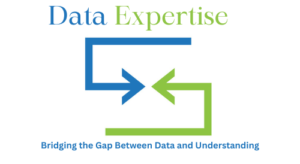In today’s data-driven world, the ability to effectively communicate data findings is paramount. Data visualization is the art of presenting complex information in a graphical or visual format. It transforms raw data into a visual narrative that is easy to understand, making it a powerful tool for decision-making, storytelling, and conveying insights. In this blog, we’ll delve into the world of data visualization and explore how it can create a significant impact.
The Power of Visualization in Data Analysis
Data visualization is a pivotal component of the data analysis process, extending far beyond mere aesthetics. Its significance lies in its ability to extract profound insights from raw data, facilitating the work of analysts in numerous ways:
Visualizing Trends and Patterns: Through visual representations, analysts gain the ability to spot trends, detect outliers, and identify intricate patterns that might remain concealed within the complexity of raw data.
Weaving a Narrative: Data, in its raw form, often struggles to convey a clear and compelling message. Data visualization transforms these abstract figures and statistics into a coherent and engaging narrative, simplifying the task of conveying the significance of the findings to a broader audience.
Captivating Stakeholders: Whether the audience consists of colleagues, clients, or the general public, the power of engaging visuals cannot be overstated. Visualizations have a unique ability to capture and sustain the attention of stakeholders, making data more accessible and relatable.
Facilitating Decision-Making: Clear and concise visualizations act as decision accelerators. They provide a rapid overview of data implications, enabling more informed and efficient decision-making processes across various domains.
Why Data Visualization Matters
- Simplifying Complexity: Data often contains intricate details and patterns that may be challenging to grasp through numbers and text alone. Visualization simplifies this complexity, providing a clear and concise representation.
- Enhancing Comprehension: Visual elements, such as charts, graphs, and infographics, make it easier for individuals, including non-technical stakeholders, to understand data trends and correlations quickly.
- Facilitating Decision-Making: Decision-makers rely on data to make informed choices. Data visualization accelerates this process by presenting insights visually, enabling quicker and more confident decisions.
- Highlighting Key Findings: Visualizations draw attention to essential data points, helping viewers focus on critical information, thus reducing the risk of overlooking crucial insights.
Types of Data Visualization
Data visualization comes in various forms, each suited to specific data types and objectives. Here are some common types:

- Bar Charts: Ideal for comparing categories or displaying trends over time.
- Pie Charts: Show the composition of a whole, often used for market share or percentages.
- Line Charts: Depict data trends over time.
- Scatter Plots: Reveal relationships between two variables.
- Heatmaps: Visualize data density or concentration.
- Geospatial Maps: Display data by geographic location.
Tools for Data Visualization
Several tools and software are available for creating data visualizations, catering to different needs and expertise levels:
- Tableau: Known for its user-friendly interface and interactive dashboards.
- Power BI: A Microsoft tool for creating interactive reports and dashboards.
- D3.js: A JavaScript library for creating custom, dynamic visualizations.
- Python Libraries: Matplotlib, Seaborn, and Plotly offer versatile options for Python enthusiasts.
The Art and Science of Data Visualization
Effective data visualization combines both art and science. It involves choosing the right visualization type, color schemes, and design elements to convey the intended message accurately. Simultaneously, it requires a sound understanding of data analysis and storytelling to interpret and present data compellingly.

Data visualization is a valuable skill in today’s data-centric landscape. It bridges the gap between raw data and meaningful insights, enabling more informed decision-making and impactful communication. In this introduction, we’ve scratched the surface of this fascinating field, and in upcoming blogs, we’ll delve deeper into specific techniques, best practices, and real-world applications of data visualization. Stay tuned to embark on this enlightening journey into the world of visualizing data for impact.





